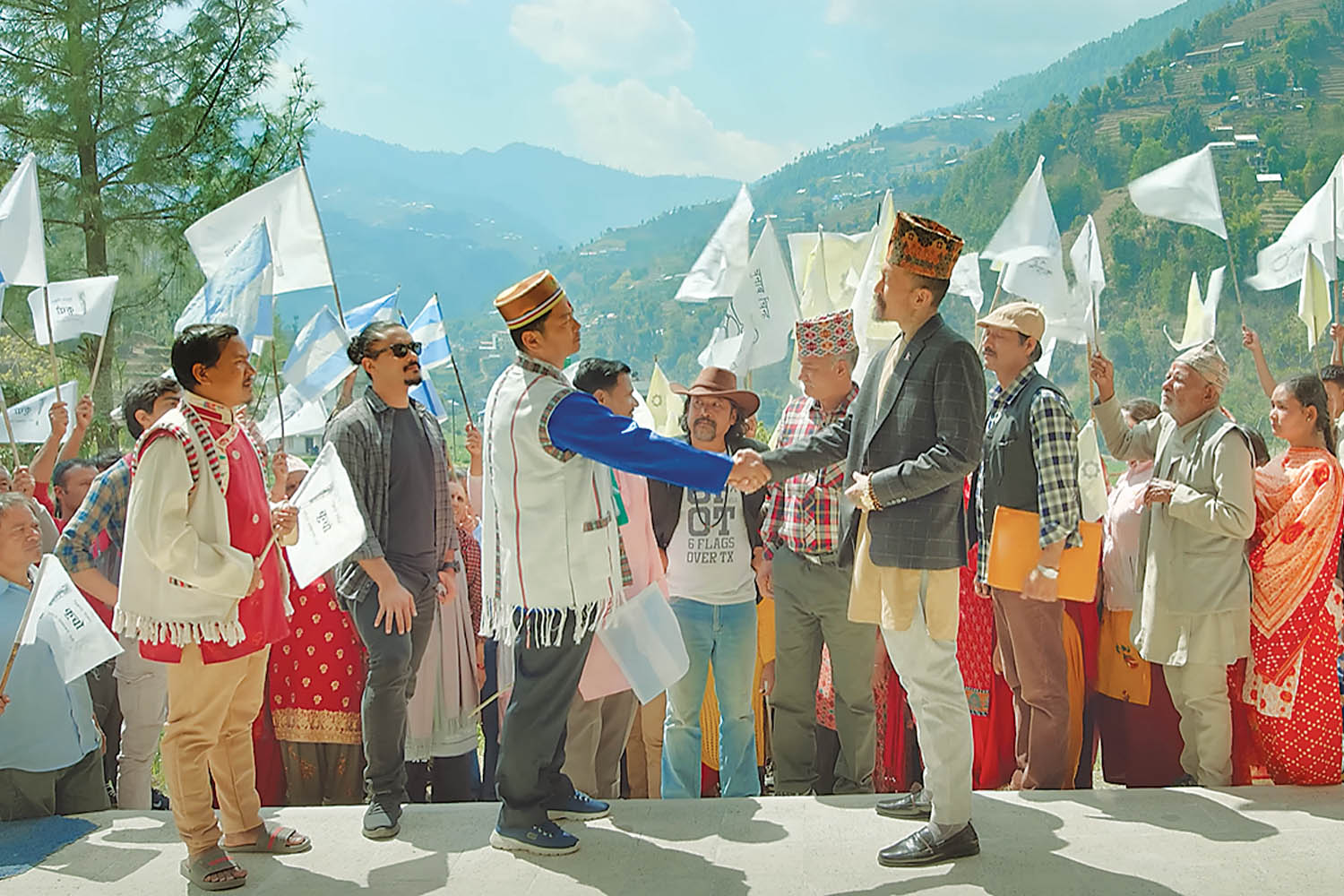Movies
The inevitable shift in the world of films
As cinema is slowly moving from curtains to the screens of our devices, filmmakers face new challenges and opportunities.
Anish Ghimire
In the ever-changing world of movies, things are shifting from big theatres to online platforms, like streaming services and digital websites. This change is happening slowly but steadily, and it’s making a big impact on how filmmakers make and show their movies. Imagine it as a big transformation where the bright lights of a cinema are now sharing the stage with the colourful glow of screens on phones, tablets and computers.
This shift is not just about where we watch movies but also about how filmmakers tell their stories to fit the online world. It’s like turning the pages of a movie storybook where challenges and chances come together, making filmmakers rethink how they connect with audiences. From the cool signs outside classic cinemas to the suggestions popping up on streaming sites, this change is not just a switch in location; it’s changing the whole relationship between moviemakers and the people watching.
In the dynamic landscape of filmmaking, the seismic shift from traditional theatres to the vast expanse of online platforms has brought forth an era rife with challenges and teeming with unprecedented opportunities for creators across the global cinematic stage. Bhaskar Dhungana, the producer of movies like ‘Kagbeni’ (2008) and ‘Sano Sansar’ (2008) and the director of ‘Suntali’ (2014), reflects on the tremendous potential of online content. However, he astutely notes that the industry grapples with a fundamental hurdle—the delivery of quality content that would captivate audiences sufficiently to prompt them to willingly pay for it. “Our content creators have not yet been able to deliver in sufficient numbers the quality of content that is required to make content consumers want to pay for it,” he says.
He mentions an additional layer of complexity: the prevailing policies that have inadvertently fostered a culture of piracy or non-payment for content. “These policies,” he laments, “create a formidable challenge for content creators attempting to sell their creations or subscriptions online.” Despite this, Dhungana remains cautiously optimistic, recognising the potential that resides within the digital realm.
Dipendra Lama, the writer and director of movies like ‘Ghampani’ (2017), ‘Gopi’ (2019), and the recent ‘Nango Gaun’ (2023), delves into the nuanced impact of online content on audience expectations. Lama thinks that the content available on online platforms has begun replacing serials that air on television channels. This has brought about a parallel surge in audience visual literacy. “Once the audience literacy increases, it poses challenges for the filmmakers because the audience will not be satisfied easily,” he explains.
This surge, he contends, poses a daunting challenge for filmmakers who must now invest more effort to captivate an audience that has become increasingly discerning. Lama underscores the imperative for filmmakers to elevate the quality of their content, recognising that failure to do so may jeopardise their ability to retain the audience’s attention in an environment that is becoming more competitive by the day.
Abdur Rehman and Kunal Mehera, who have directed movies like ‘The Choice of 18th’, ‘Money Plant’, ‘Loopy Jungle’, ‘The Call’ and ‘Talky Valley,’ solely for various film festivals in India, bring a unique perspective to the discussion surrounding the evolving landscape of filmmaking. Their insights shed light on both the opportunities and challenges that arise in the wake of the industry’s slow transition from theatres to online platforms.

In terms of opportunities, Rehman and Mehera emphasise the advantages presented by online platforms. They highlight the prospect of creating films on a low budget, offering filmmakers a cost-effective means to reach a diverse and global audience. This shift also brings forth the potential for increased recognition of films and filmmakers on an international scale.
The focus on quality content-based films emerges as a prominent opportunity, emphasising a departure from potentially formulaic or commercial constraints. The online space is seen as a platform that inherently promotes equality, providing an equal footing for all filmmakers and serving as a means to avoid the pitfalls of nepotism often prevalent in the traditional film industry.
“The ease of access to the audience, facilitated by digital platforms, is considered a significant advantage, ensuring a direct connection between creators and their viewers,” they stress. The portability of online entertainment further enhances the accessibility and convenience for audiences, and the termination of agents and middlemen in negotiations is seen as a positive step toward empowering filmmakers in their dealings.
However, with these opportunities come a set of challenges that Rehman and Mehera acknowledge. High-budget films face increased risks in the digital landscape, where financial considerations may pose a threat to their success.
Traditional distributors, once the backbone of film promotion, now encounter challenges with the rise of digital platforms, potentially disrupting established distribution networks. “The prospect of the audience losing interest in the traditional cinema hall experience poses a significant challenge, necessitating a strategic response from filmmakers to maintain viewer engagement,” they add.
The intensification of competition in the online space is recognised as a potential hurdle, with filmmakers vying for attention amidst a sea of digital content. “The dominance of over-the-top (OTT) platforms further complicates the landscape, potentially limiting the opportunities for independent filmmakers,” they add. Lastly, the difficulty in selling digital rights emerges as a practical challenge, requiring filmmakers to navigate the complexities of the digital marketplace to monetise their creations effectively.
As filmmakers navigate this complex terrain, oscillating between challenges and opportunities, the cinematic landscape continues to evolve. The intersection of creativity, technology and audience expectations shapes the trajectory of filmmaking in this digital era. The narrative unfolds not just on the screen but in the very fabric of the industry, where each filmmaker contributes to the ongoing saga of transformation and adaptation in the relentless pursuit of storytelling excellence.




 6°C Kathmandu
6°C Kathmandu













